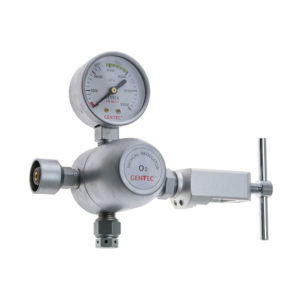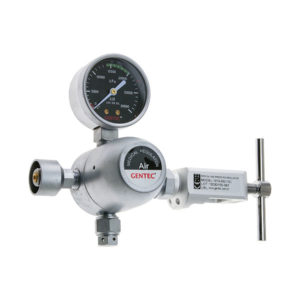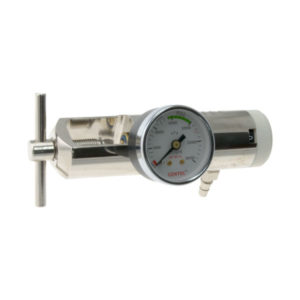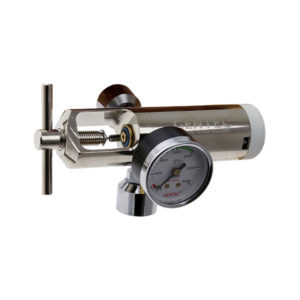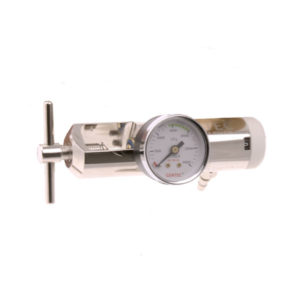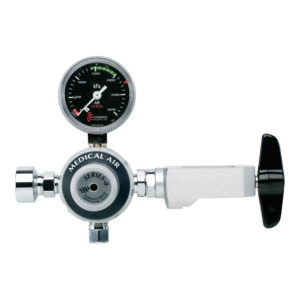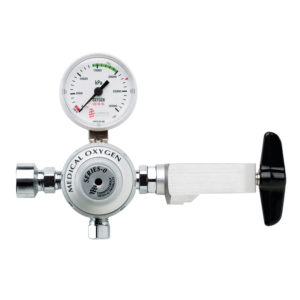Medical Oxygen Regulator
Medical oxygen regulators, such as Vectr Plus’ gas regulators, controls the oxygen flow from a medical gas tank to the patient. Our premium selection of accessories features medical gas regulators, portable phlegm suction units, concentrators and flowmeters.
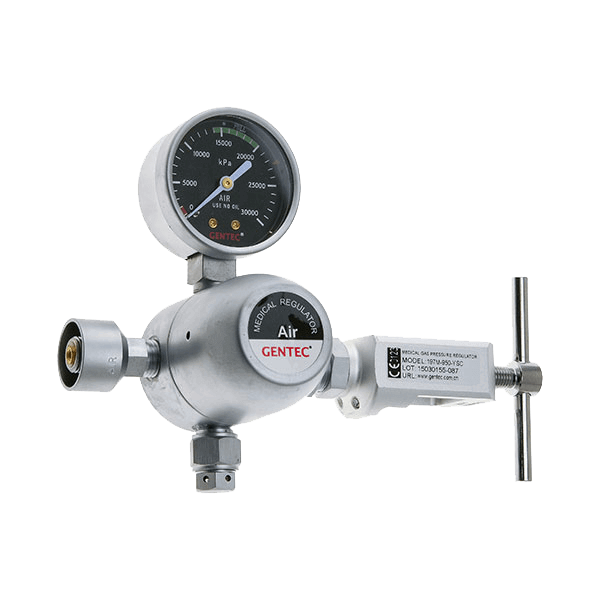
All products approved by the Australian Therapeutic Goods Administration.
Responsive customer service and support from qualified technical experts.
Parcel tracking and express delivery. For information on shipping and returns, click here.
Based on the Gold Coast, we send medical equipment Australia wide.
Showing all 7 results
What are the different types of medical oxygen regulators?
There are several types of medical oxygen regulation systems; standard, adjustable, flow control valve, regulator and flow meter combos, pediatric, and laboratory. Some are a single stage regulator, double stage regulators with a triple filter system.
Standard
These regulators are the most commonly used and come with a simple preset PSI (pound per square inch) setting of 50 PSI. This simple preset helps to keep the regulator performance and oxygen PSI output at a constant and consistent level. With standard regulators, the user cannot adjust the delivery pressure or control or reduce the flow rate.
Adjustable
These regulators let the user control the desired PSI output between a specific range, usually 0-100 PSI or 0-50 PSI. They have two gauges, one to measure the amount of oxygen left in the tank and the other to display the PSI output level. The delivery pressure is easily adjusted using the knob on the front of the regulator. It is important to note that adjustable regulators only control the delivery pressure of the oxygen; they do not control the flow rate.
Flow Control
These regulators are designed to control the flow rate, or LPM (litre per minute), of oxygen being used. These regulators have two gauges, one that displays the level of compressed oxygen left in the tank and the other for the LPM reading. Flow control regulators typically come with a preset output of 50 PSI, and the flow range on the LPM gauge can vary depending on the application.
Regulator & Flowmeter Combos
These regulators function similarly to the flow control regulators mentioned above. The primary difference is that instead of a gauge to measure the LPM reading, there is an oxygen flowmeter attached to monitor the LPM. A flowmeter is typically preferred to a gauge in many medical applications as it is much more precise and gives the user better control over the LPM rate.
Pediatric
These regulators are specialty regulators used for neonatal or low-flow applications. Oxygen regulator medical applications intended for use in neonatal or pediatric care range from 200cc up to 1.35 lpm.
Laboratory
These adjustable regulators come in varying PSI options ranging from 0-15 PSI up to 0-450 PSI. They are used to create controlled environments and should not be used for patient applications.
What is an oxygen regulator?
A medical oxygen regulator is a device that controls the flow and pressure of oxygen from a compressed gas cylinder or tank to a patient. The medical oxygen regulator is designed to ensure that the patient receives the correct amount of oxygen at the required or prescribed pressure. Regulators help assist avoiding high pressure failures.
They typically consist of a body, a regulator seat, a pressure gauge, a flow meter, a safety relief valve and an outlet fitting. The body attaches to the oxygen cylinder or tank and contains the regulators, the mechanism that reduces the high pressure of the gas to a lower, more manageable level. The pressure gauge indicates the gas pressure in the cylinder or tank, while the flow meter controls the amount of gas delivered to the patient.
How do you use a medical oxygen regulator?
Medical oxygen regulators control oxygen flow from a compressed oxygen cylinder to a patient. Here are the general steps required to use a medical oxygen regulator:
-
Make sure the oxygen cylinder is secured correctly and turned on.
-
Ensure that the regulator’s flow meter and pressure gauge are set to zero before attaching the regulator to the cylinder.
-
Connect the regulator to the cylinder valve by aligning the pins on the regulator with the holes on the valve and twisting the regulator clockwise until it is securely fastened.
-
Turn the flow meter knob to the prescribed flow rate as ordered by the physician or healthcare provider.
-
Verify that the pressure gauge on the regulator indicates the cylinder pressure. It should be within the recommended range to avoid high pressure failures.
-
Attach the appropriate oxygen delivery device (e.g. nasal cannula, face mask) to the regulator outlet.
-
Ensure the oxygen delivery device is correctly fitted to the patient and is comfortable.
-
Monitor the flow meter and pressure gauge periodically to maintain the prescribed oxygen flow rate and cylinder pressure.
Do you need a regulator for the oxygen tank?
Yes, using a regulator when using an oxygen tank is essential. Oxygen tanks contain compressed oxygen under high pressure, which can be dangerous if not properly controlled. A regulator is a device that attaches to the tank. It reduces the high pressure inside the tank to a lower, more manageable pressure that can be safely used for medical or other purposes.
The regulator also provides patients with a continuous flow of oxygen at a safe and consistent rate, without resistance, which is essential for people who need oxygen therapy to manage their breathing. Without a regulator, the resistance to the flow of oxygen could be too high, or the resistance is too low, which could be dangerous or ineffective for the patient.
Can you use an oxygen tank without a regulator?
Using an oxygen tank without a regulator is not recommended and can be dangerous. A regulator is an essential component that controls the flow of oxygen from the tank to the user. Without a regulator, the flow of oxygen is uncontrolled and can lead to oxygen toxicity or even explosions.
Oxygen tanks contain compressed oxygen gas at high pressure. The high-pressure gas from inside the tank is regulated to a safe level by the regulator, which reduces the high-pressure gas to a safe level for the user. If the tank is used without a regulator, the high-pressure gas will remain high, and the user will be exposed to a potentially dangerous level of oxygen.
In addition to the high pressure and the health risk of oxygen toxicity, there is also the danger of explosions. Oxygen is not flammable, but it is an oxidizer, which can cause other materials to ignite and burn more easily. If the pressure inside the tank becomes too high, the tank can rupture and cause an explosion.
Regulators also serve various other vital functions, such as allowing the user to adjust the flow of oxygen to the desired level and providing a gauge to monitor the remaining amount of oxygen in the tank. Without a regulator, it is difficult to monitor the flow of oxygen or know when the tank is running low.
How to set up an oxygen tank regulator for optimal regulator performance
Setting up an oxygen tank regulator is essential in using an oxygen tank safely and effectively. Here are the steps to follow to set up an oxygen tank regulator:
Step 1: Gather your tools and materials. You will need some tools, an oxygen tank, a regulator, and tubing.
Step 2: Ensure the oxygen tank is turned off and the regulator is set to zero.
Step 3: Attach the regulator to protect the oxygen tank by aligning the pins on the regulator with the holes on the oxygen tank and turning it clockwise until it is secure.
Step 4: Tighten the connection using an adjustable wrench to tighten the nut on the regulator stem.
Step 5: Attach the tubing to the outlet port on the regulator and secure it with a clamp.
Step 6: Turn on the oxygen tank by slowly turning the valve counterclockwise until it is fully open.
Step 7: Adjust the flow rate by turning the flow meter knob on the regulator clockwise or counterclockwise until the desired flow rate is reached.
Step 8: Check the gauge on the regulator to ensure enough oxygen in the tank for the intended use.
Step 9: After use, turn off the cylinder valve of the oxygen tank by turning the cylinder valve clockwise until it is fully closed.
Patients need to follow the manufacturer’s instructions and any guidelines provided by a healthcare professional when setting up an oxygen tank regulator so it ensures superior performance. Regular maintenance and checks should also be performed to ensure that the regulator and tank seals are working correctly and safely.
Final Thoughts
In conclusion, if you’re looking for a reliable and high-quality oxygen regulator for use in all environments in Australia, VECTR Plus offers the best choice in Australia and is an industry leader. Our regulators and tools are designed to meet the unique needs of the Australian market, providing safe and efficient delivery and administration of oxygen to users.
We take pride in offering regulators that have superior performance, low maintenance and are easy to set up, use, and making them suitable for a wide range and variety of applications, including medical and industrial use cases. Our regulators are built with durable materials that ensure they can withstand the wear and tear of daily use, providing long-lasting and reliable performance.
So, if you’re looking for a reliable, high performing product practical design and safe oxygen regulator for use in Australia, look no further than VECTR Plus. Our regulators are the perfect choice for those who need a high-quality, simple but effective design, efficient, and easy-to-use oxygen delivery system. Contact us today to learn more about our products and how we can help you with your oxygen delivery needs.
